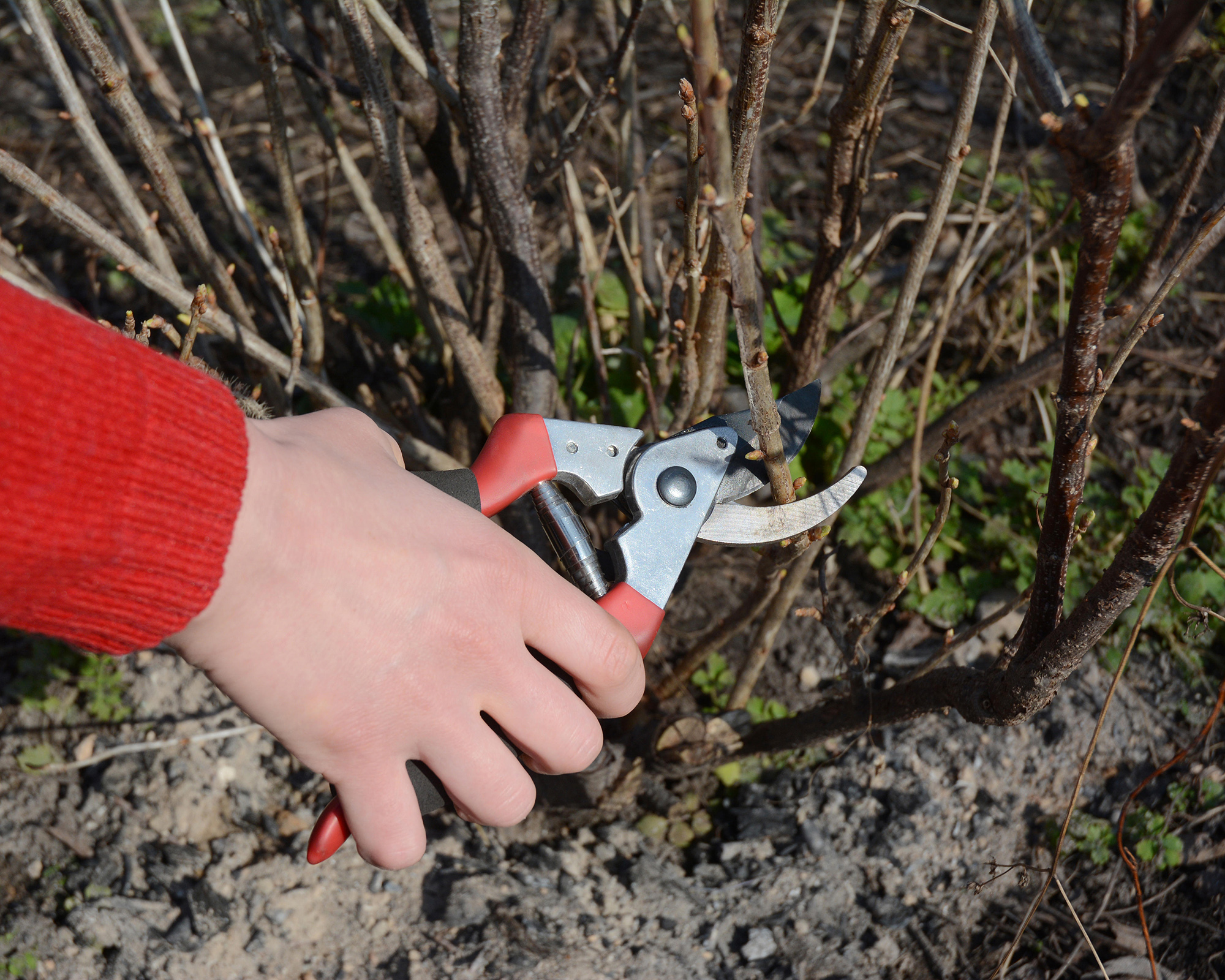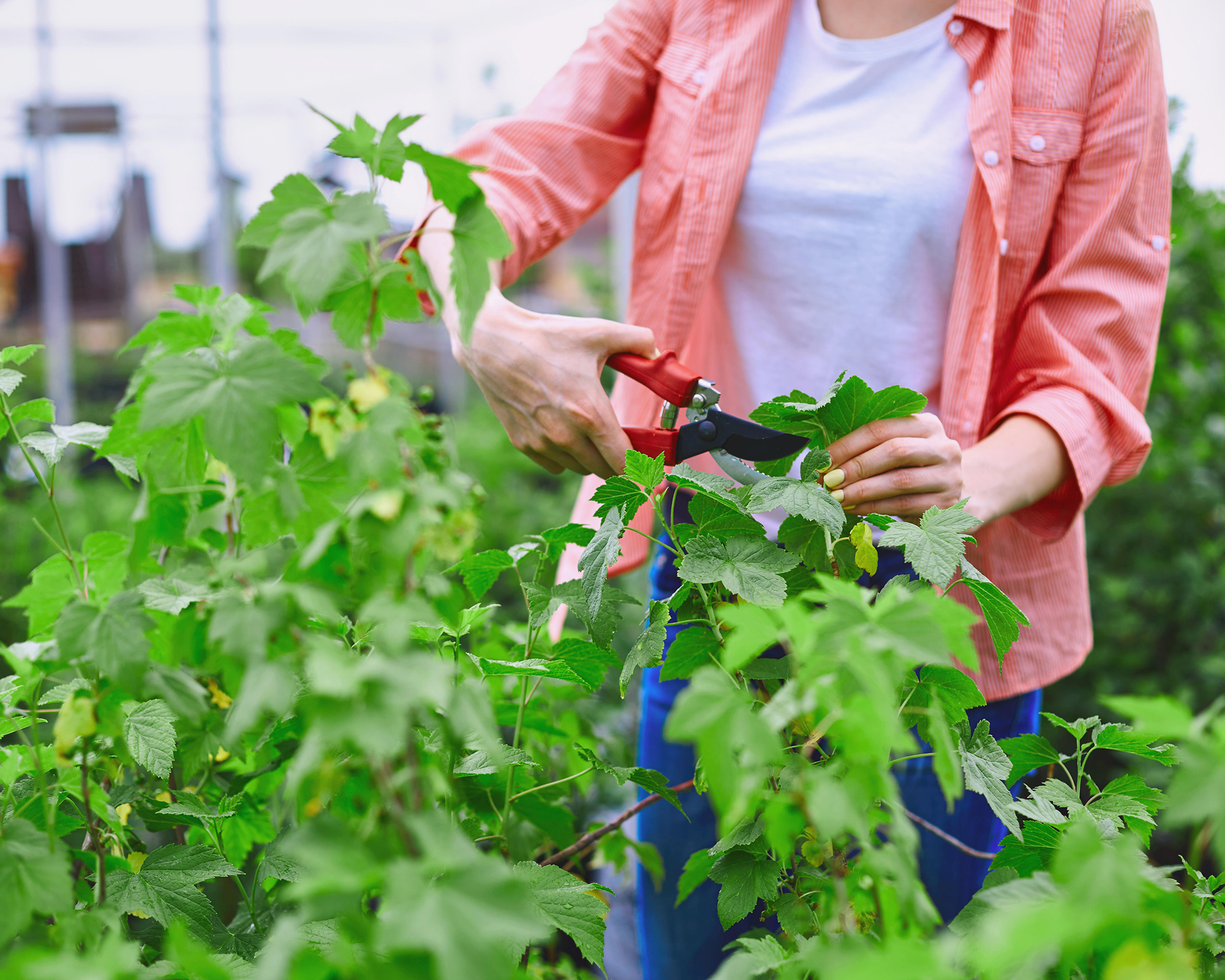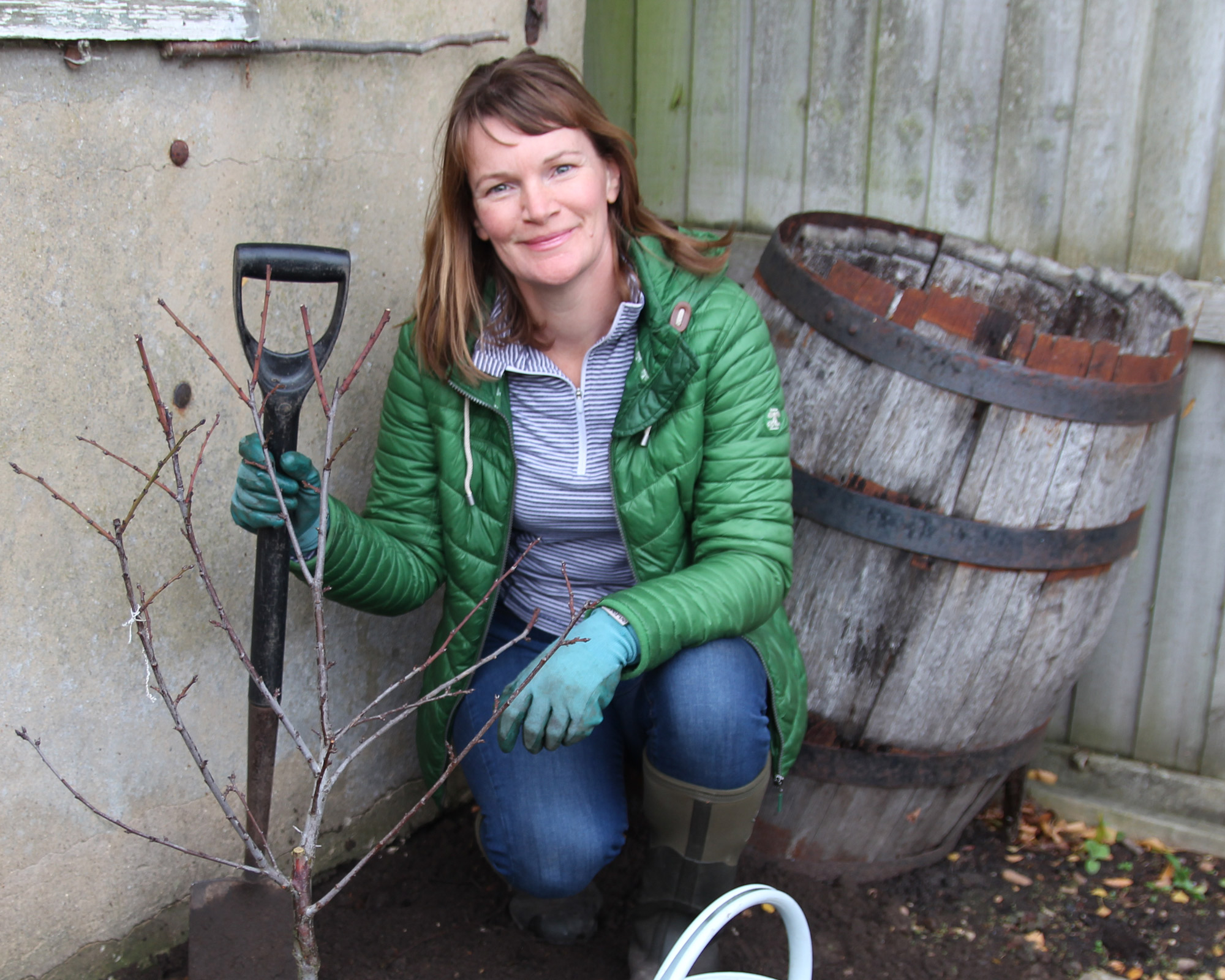How to prune blackcurrant bushes: all you need to know
Learn how to prune blackcurrant bushes to keep your plant producing plenty of fruit year after year


Other than knowing how to prune blackcurrant bushes properly, and at the right time of year, there is very little else needed to ensure a successful yield of fruit. Robust, trouble-free and prolific, they will be great as part of your kitchen garden ideas. The bushes are incredibly simple to grow; there’s not much going against them! They're happy in sun or shade and one bush is all that’s needed, to produce high yields of fruit.
Blackcurrants crop best on vigorous two and three year old stems. Two-year-old wood tends to be grey in color, whereas the new shoots are rusty brown. An unpruned mature plant will ultimately become less and less productive over time. Worry not: a little straightforward pruning in mid winter (typically January) will make sure your blackcurrant bushes are kept in the finest shape and best health ahead of spring and the subsequent fruiting season.
Increase your fruit yield by learning how to prune blackcurrant bushes
Just as is the case with pruning shrubs, it's essential to prune blackcurrant bushes regularly to keep the plants healthy and help increase their yield. If you have a mature plant then pruning will be slightly different to new plants. Our advice explains what you'll need to do for both new and more established plants.
For both methods, you're aiming to remove any branches which are touching or crossing over as this can cause disease. Aim for an open goblet shape so there's plenty of air circulating. You'll want a pair of the best secateurs so you can easily take out any stems which are growing up through the centre of the plant.
How to prune new blackcurrant bushes
Follow this method for blackcurrrant bushes that have been planted in the last year.
- In the first year, cut all stems to one bud above ground level after planting using a lopper.
- Next year, remove weak, congested and downward-pointing branches to ground level to create an open, goblet-shaped plant.
- Thereafter, prune before late winter, removing up to one third of the branches to the ground, and removing old, weak wood.
- Sprinkle some feed and mulch once you've finished pruning.

How to prune established blackcurrant bushes
If your blackcurrant bush is more than two years old, this is the pruning method you need to use:
- If you are faced with a severely neglected plant that is congested but otherwise healthy, begin by cutting down all the stems back to 2in (5cm) above soil level. You might think this sounds a little drastic, but vigorous plants will respond well to such treatment. Loppers and secateurs are the best tool for the job as canes can be thick.
- Most established plants simply need the older wood removed to make way for new stems. Using loppers, cut out any dark-barked stems to the base – these are the oldest stems.
- The remaining grey and brown barked stems will crop well so can be largely left in place. The only task now is to remove any weak or low-lying stems. These will produce berries that will dangle on the soil, where they will be damaged by rain and pests.
- Give the soil around the plant a rich feeding and mulch with compost.

When should I prune a blackcurrant bush?
Cut them back over winter (between November and March), removing old, dead and congested branches so there is room for new canes to grow through. To avoid confusion between new and fruited canes, remove old growth straight after harvesting and tie the new growth to supportive wires or canes.

How do you take care of blackcurrant bushes?
Blackcurrants will grow and crop almost anywhere including in a raised garden bed, though it will need some sun. Any piece roots so buy a choice new variety or three, take and set a few more cuttings than you need, and then give the pruned original to a friend. Honestly, in three years time this produces better plants.
Before planting a new soft fruit bush, make sure the soil has been weeded and enriched with well-rotted compost or manure. When planting blackcurrants, do so around 2in (5cm) deeper than soil level to promote the development of new shoots. Water the bush well, so the roots are saturated. Keep it well-watered while it gets established. There are plenty of options for fruit trees to grow in pots if you live in a small garden.
In colder weather, you'll need to consider how to protect plants from winter, as well as adding the necessary pruning to your list of winter jobs in the garden.

Can you prune blackcurrant bushes in summer?
When considering how to prune blackcurrant bushes properly, the best time to complete it is during midwinter, after they've finished fruiting. Summer will be when the crop is still producing its sweet berries so you can gently prune away any dead leaves but getting rid of too much of the stems will mean less fruit yield.
You can remove some of the healthy leaves however and these can be used to make herbal tea.

Can I move a blackcurrant bush?
If your blackcurrant bush isn't performing well where it is, or you fancy a change, they are very easy to move. Do this when it is dormant over winter.
For best results with how to move a tree or shrub of any kind, not just fruiters, do so on a day that is mild, overcast and relatively still, so the roots lose as little moisture as possible.
Dig the new hole first, so the shrubs are out of the ground for as short a time as possible. If you can’t re-plant immediately, wrap the roots in plastic or damp newspaper and keep the plant somewhere cool and shady.
Keep as much soil around the roots as possible when lifting. By watering and then mulching when the plants are in their new location, they will shoot away next spring.

How many years do blackcurrant bushes last?
A single blackcurrant bush will last for about 15 years. But whether it will continue to produce fruit for this long this will depend on whether the old stems have been removed to make way for new growth. As blackcurrants will grow on stems which are 2-3 years old.
If you want to extend the life of your bush even longer, then it is possible to propagate from the hardwood cuttings to produce new bushes. When pruning back in winter, select a piece of this year’s growth, cut it into sections 12in (30cm) long, dip one end of each into rooting powder and insert into cuttings compost.
Once you get to grips with blackcurrant pruning have a look at the other fruit trees in your garden and learn how to prune a plum tree too.
Lucy studied horticulture at Writtle and Wye colleges, before going on to be a Horticultural Advisor at RHS Wisley for 6 years. Lucy has been Head Gardener on a 100-acre private Essex estate for the past 7 years, but she still writes regularly for titles such as The Garden, Gardeners’ World, The Guardian and Amateur Gardening. Lucy has also contributed to various RHS books, being sole author of the RHS Step by Step Veg Patch.

